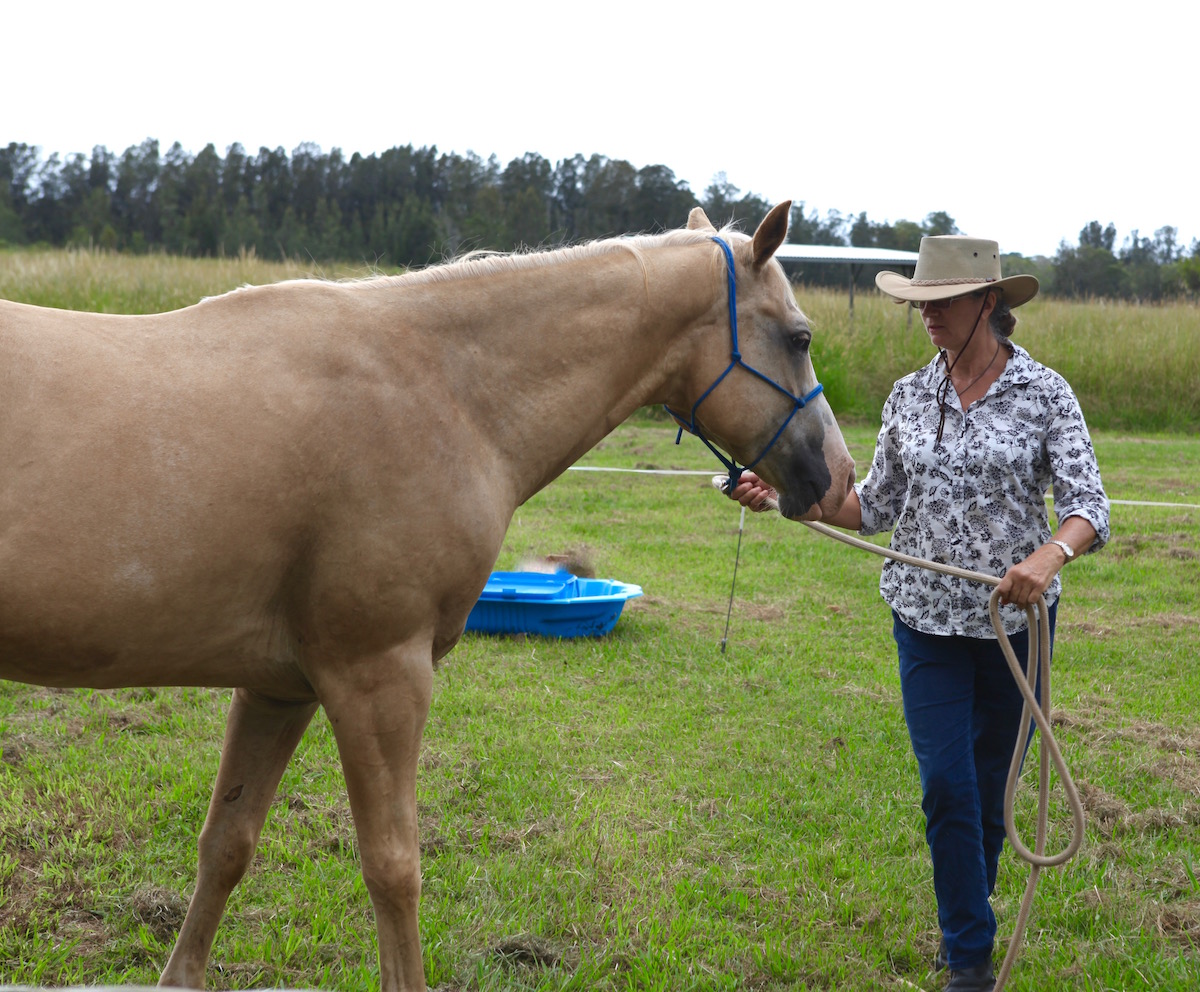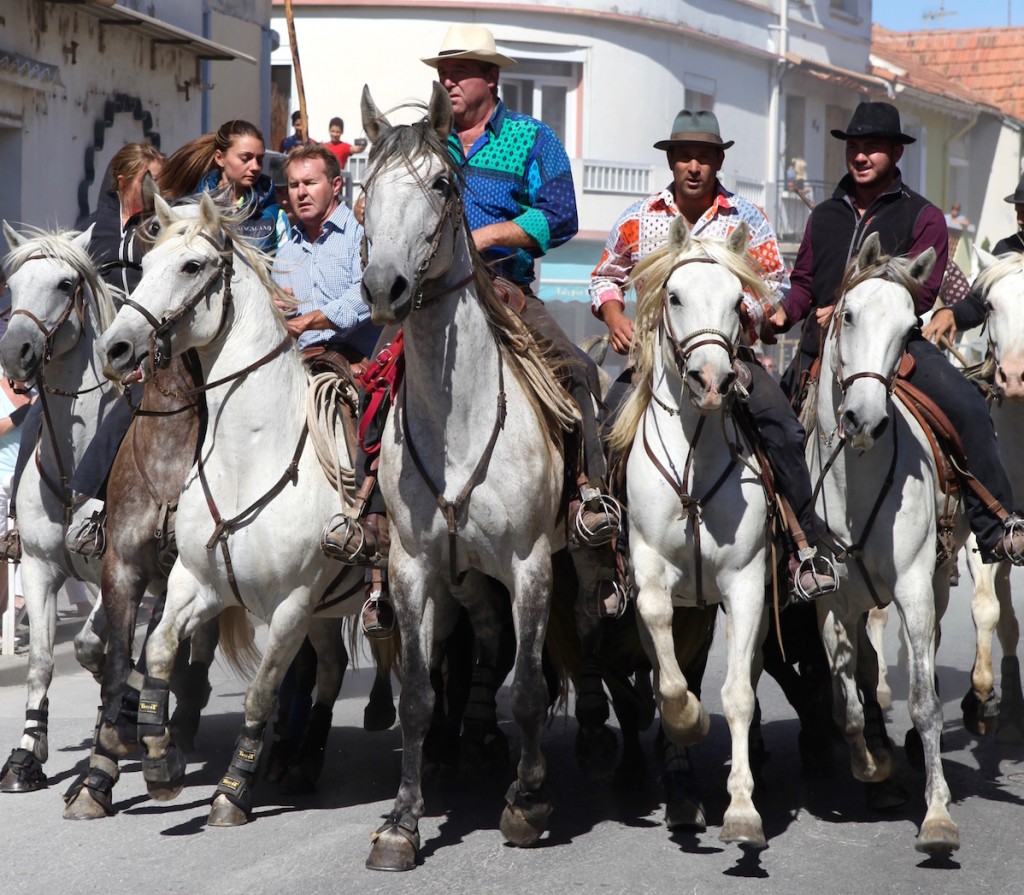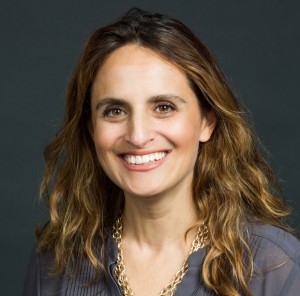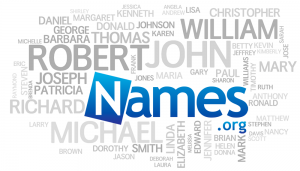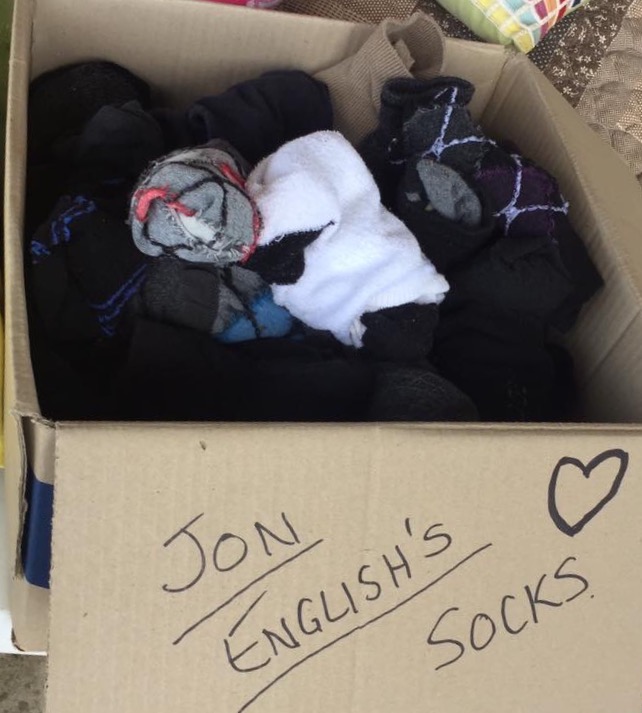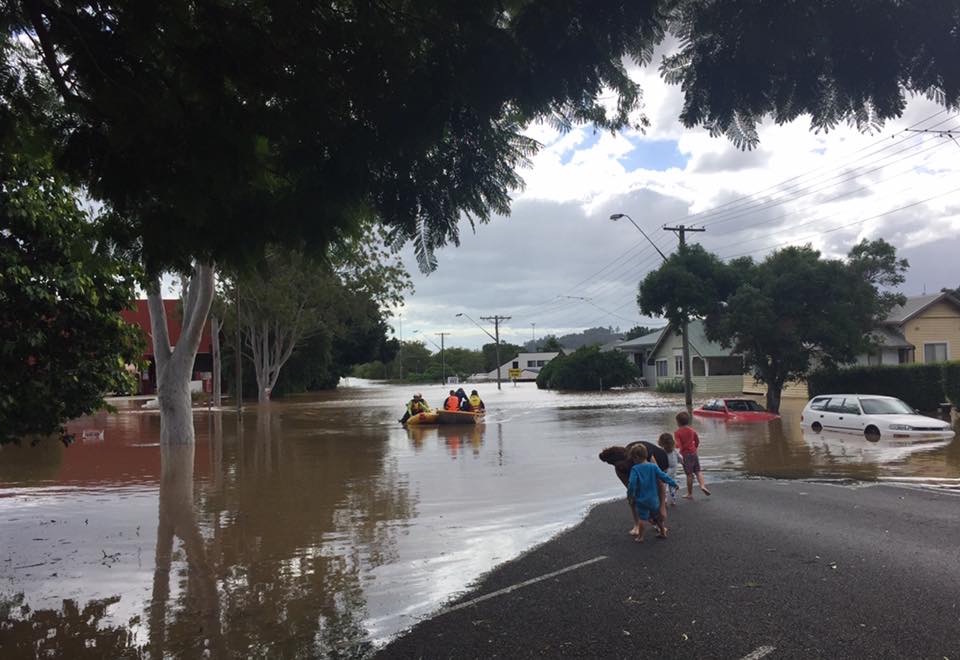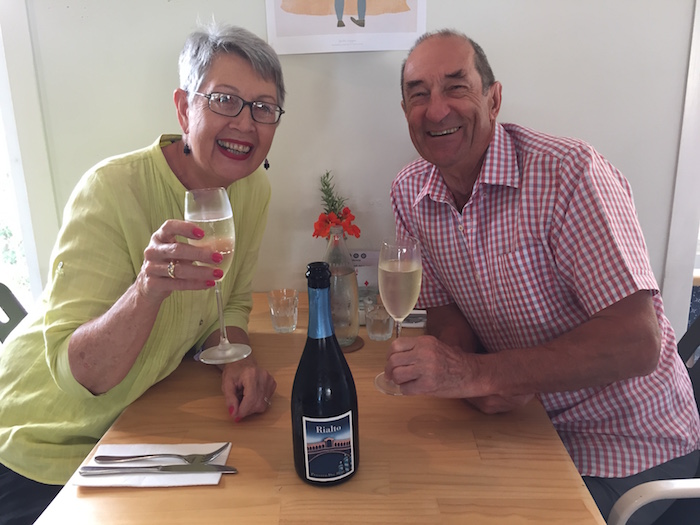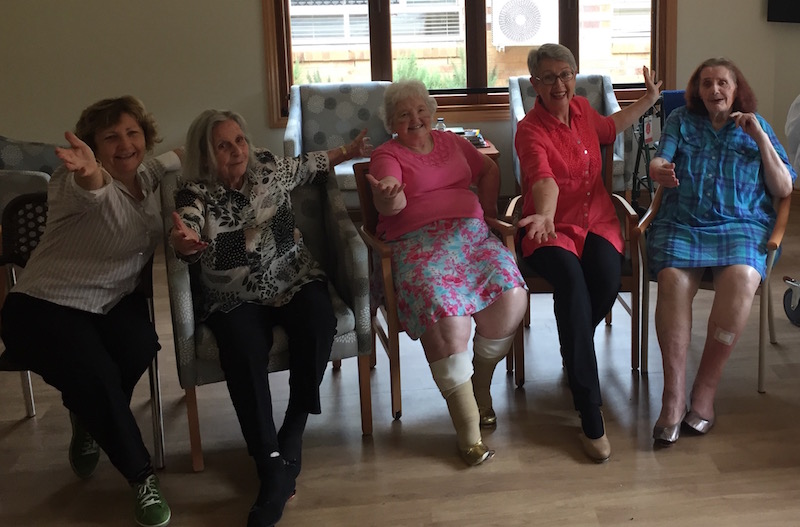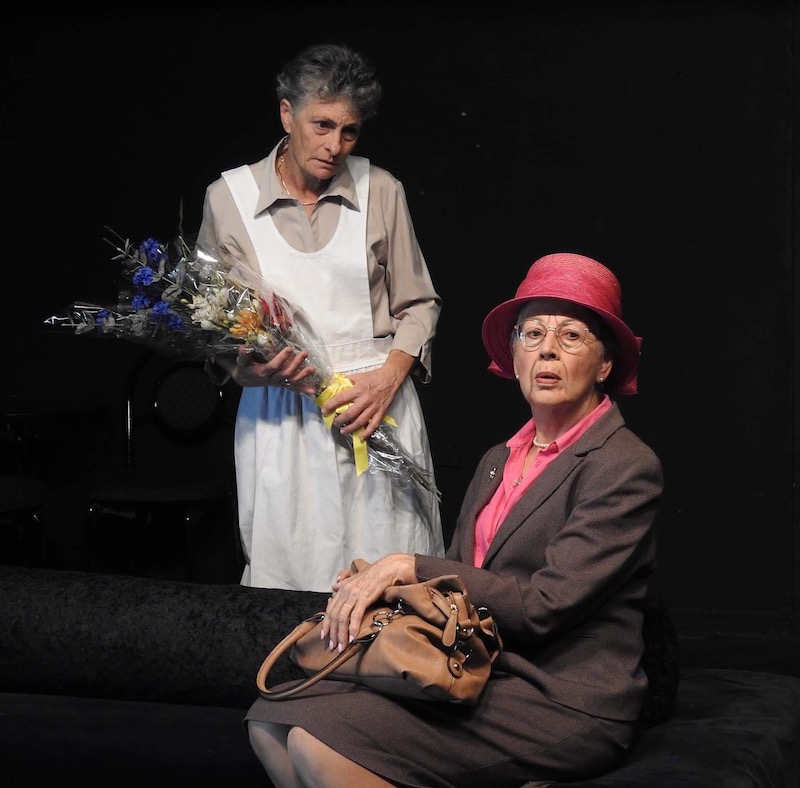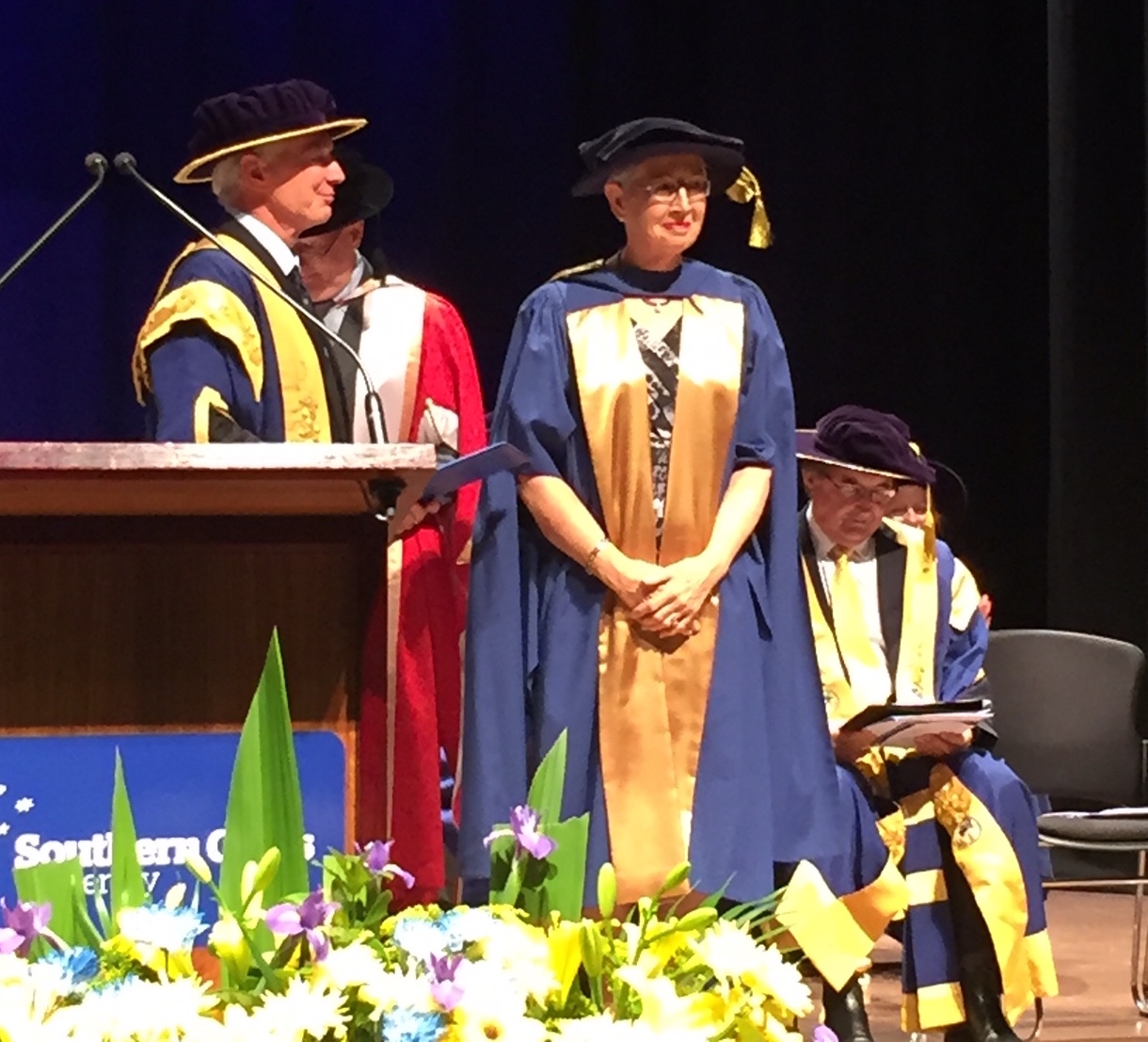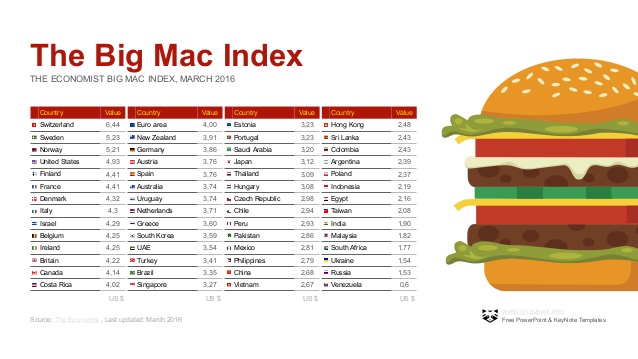The post Parenthood – the scariest ‘hood’ of all appeared first on .
]]>In today’s crazy global political climate we’re seeing a lot of focus on who and/or what might be threatening our way of life. The politicians in the media tell us to fear refugees and welfare recipients; the conspiracy theorists are flooding our feeds with warnings about chemtrails and falling off a flat earth and the hippies are terrified of climate change, politicians and the media. All of these things (including banks and alien invasions of course) may pose some kind of threat to us in their own way, but I fear we are being blindsided with some kind of divisive scapegoating technique designed to distract us from the REAL threat to our way of life. Children, my friends, children.
Now before you get all defensive about your lovely bundles of spirited joy, I can assure you that I am not some kind of child hater. Nor is this another column written by an undervalued mother, smashing out the injustices of her thankless labours on her keyboard and getting nothing in return but a cute hashtag …but solidarity to you, Sisters #valium. I genuinely think children are lovely. It’s just that I have been paying close attention lately and I am pretty sure they are also terrorists.
I know this is going to take some convincing so I will just put my observations here:
- Anecdotal accounts from anyone who have children attest to the fact that they arrive in our country and completely change our way of life.
- They use well-known torture techniques like sleep deprivation and panoptic style surveillance methods to disorientate you and break your will. They will even go so far as to watch you on the toilet.
- Children have grown up to successfully invade, conquer and take control of every corner of every single country in the world.
- Those who have children begin to identify with their captors. A process that is encouraged by other captives of children in what can only be described as some kind of globalised Stockholm Syndrome.
- The government has obviously known about the dangers of children for years. Why else would they go to such great lengths to oppress and dispossess everyone who is young of all their rights and opportunities? They clearly need to protect us from this terrible threat to all we hold dear.

So there it is. Hard to argue with evidence this compelling. Oh, I know we like to think we’re in control. We kid ourselves that we’re teaching them things, that we’re instilling in them values that align with our own and that in time they’ll realise our wisdom – just as we did with our parents …right? Well, I don’t know about you but I certainly never realised my parents’ wisdom. I nod politely when they tell me how to live and think it’s downright hilarious watching them get all freaked out over microwave oven technology. Children don’t come around to our wisdom. They obliterate it and replace it with their own.
That’s right my friends and allies in the aging population, Millennials have become more relevant than you and me. Oh, they will let us believe that we still have some influence in the world for now. They’ll let us think it’s us mocking them while they secretly laugh at our out-of-date thinking, our weird social etiquette and bizarre turmeric free coffees. And, as if that isn’t bad enough, those gorgeously small, big eyed, nappy wearing overlords, screaming blue murder because you threw away that piece of Lego that the dog chewed on for three weeks? Those little spies will, in our lifetime, take over parliament and put themselves in charge of our aged care pension policies. Yep. After they complete the slow, insidious but completely inevitable erosion of our values and our relevance they will take over the world and there is not a goddamn thing you can do to stop it.
So be nice to your children and think twice before mocking a Millennial because, before you know what’s happening, they won’t just walk around like they own the place, they WILL own it.
The post Parenthood – the scariest ‘hood’ of all appeared first on .
]]>The post Equine Facilitated Magic appeared first on .
]]>I was only five years old when I first noticed that horses made me happy. My best friend, Sally, a couple of years older than me, had a perfect first pony, a grey Welsh Cob called Lucy, as safe, sound and sane as they come, and Sally was kind enough to let me spend hours with them both, grooming, or walking beside them, or even riding, or doubling together.
Looking back through the mists of time, there’s something that stands out about those early memories – and that’s the fact that the absolute best times we shared were not necessarily the riding ones. The times spent talking down by the river while Lucy munched contentedly beside us; the times when we would tuck Lucy up in her stable, out of the bad weather, and just hang in there with her, plaiting her mane or simply sometimes just leaning against her, inhaling her warm horsey smell. All three of us just about as content as it’s possible for children and pony to be.
Fast forward almost sixty years and 12,000 miles away from the country of my birth, and here I am, with a group of like-minded women having just taken part in an Equine Facilitated Learning Level 1 course – in order to become practitioners of this groundwork based course, in which there are three participants – the client, the horse and the facilitator.
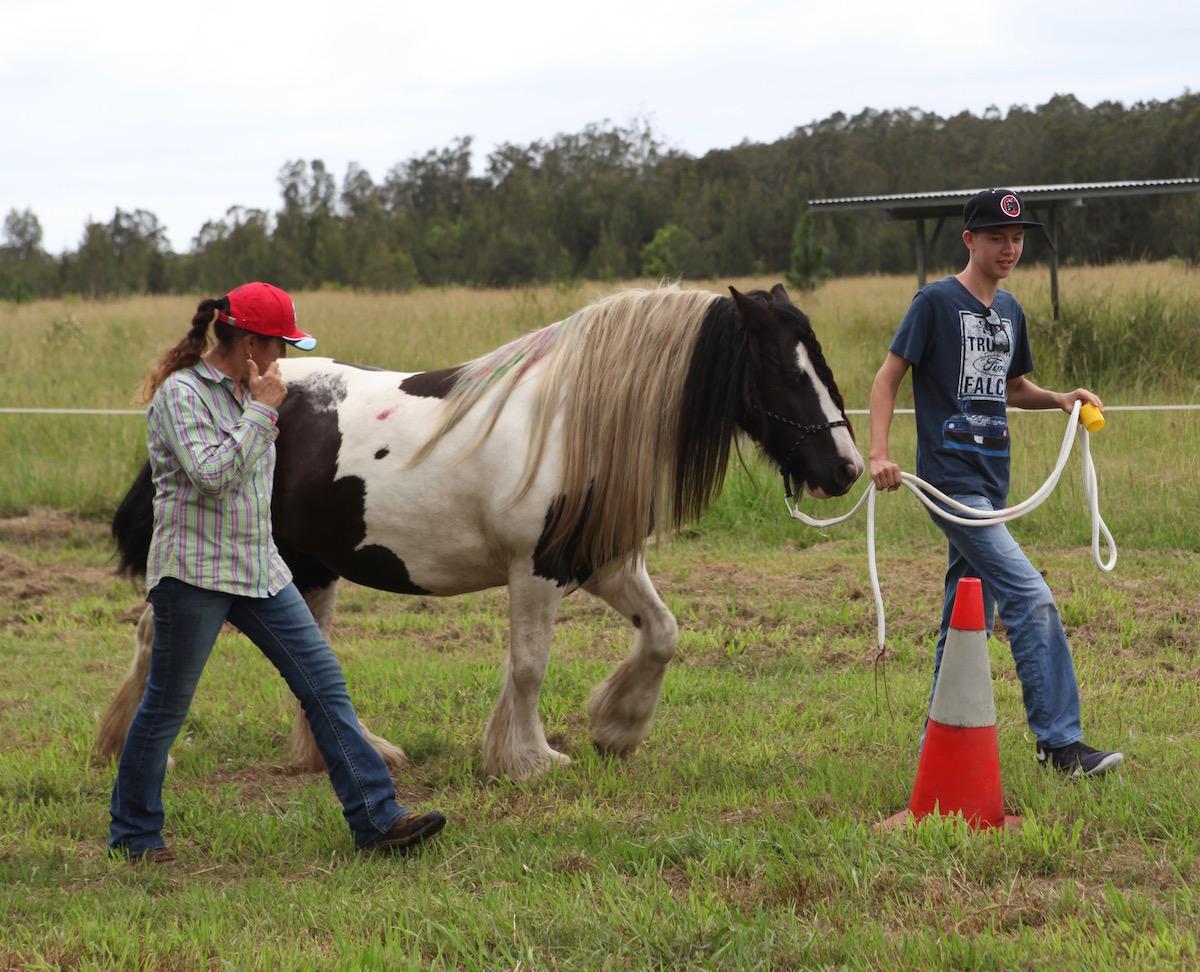
The client – 16-year-old Winter, the horse, Gypsy Cob Sweetcheeks and facilitator-in-training Sue Whatley.
After many years of horse rescue and rehabilitation, natural horsemanship and the teaching of my own methods to children, friends, family and volunteer helpers, I’m not new to the world of equine therapeutic modalities, but I decided to do this course for a specific reason – I wanted to have a qualification which will allow me to do something I’m passionate about – to set up horse groundwork sessions for our Save a Horse Australia rescue horses and for those who might benefit from time spent hanging out with horses, in which ‘magic’ is the key ingredient.
It was an intense four days! The clinic was conducted by Elaine Hughes, the guardian of EFL in Australia. Originally from the UK, but now based in Victoria, Elaine has had many decades of horse experience, and has studied with many of the ‘natural’ trainers, but it was a meeting with Frank Levinson, the founder of EFL, that prompted her interest in the program. When she and her family of four and two-legged friends moved to Australia, Elaine partnered with Sally Francis to create AEFL. Elaine teaches the clinic with her two off-siders, Louise, otherwise known as Irish, and her partner Dave.
What I witnessed as we moved through the four days into a deeper understanding of the horse and human bond, culminating in working with ‘real’ clients on the last day is that EFL seems to substantially deepen people’s understanding of their personal issues and feelings, and that some level of fundamental relaxation occurs.
But the careful – almost invisible – guidance of the facilitator also allows children and adults to experience, as Elaine says: “a huge surge in self-esteem and confidence when they realise they can create boundaries and direct a pony or horse to move in a particular way.”
Children who have stopped speaking; people with anxiety and depression; children and adults with physical or intellectual(or both) disabilities; people who are simply afraid of horses and want to learn not to be – all of these scenarios (and more) were presented to us over the four days, either in theory or practice with role play, or clients. It was an incredibly fulfilling experience for all of us to take our already existing horsemanship skills and our rapid immersion into EFL and to witness the ways in which we could help both ourselves, the client and the horse develop what I can only describe as an elasticity of brain and body. We learnt quickly to allow the space for the session to evolve into whatever is most fulfilling for the client and the horse!
The next step in becoming an EFL practitioner for us all is ten hours of sessions with clients, so watch this space!
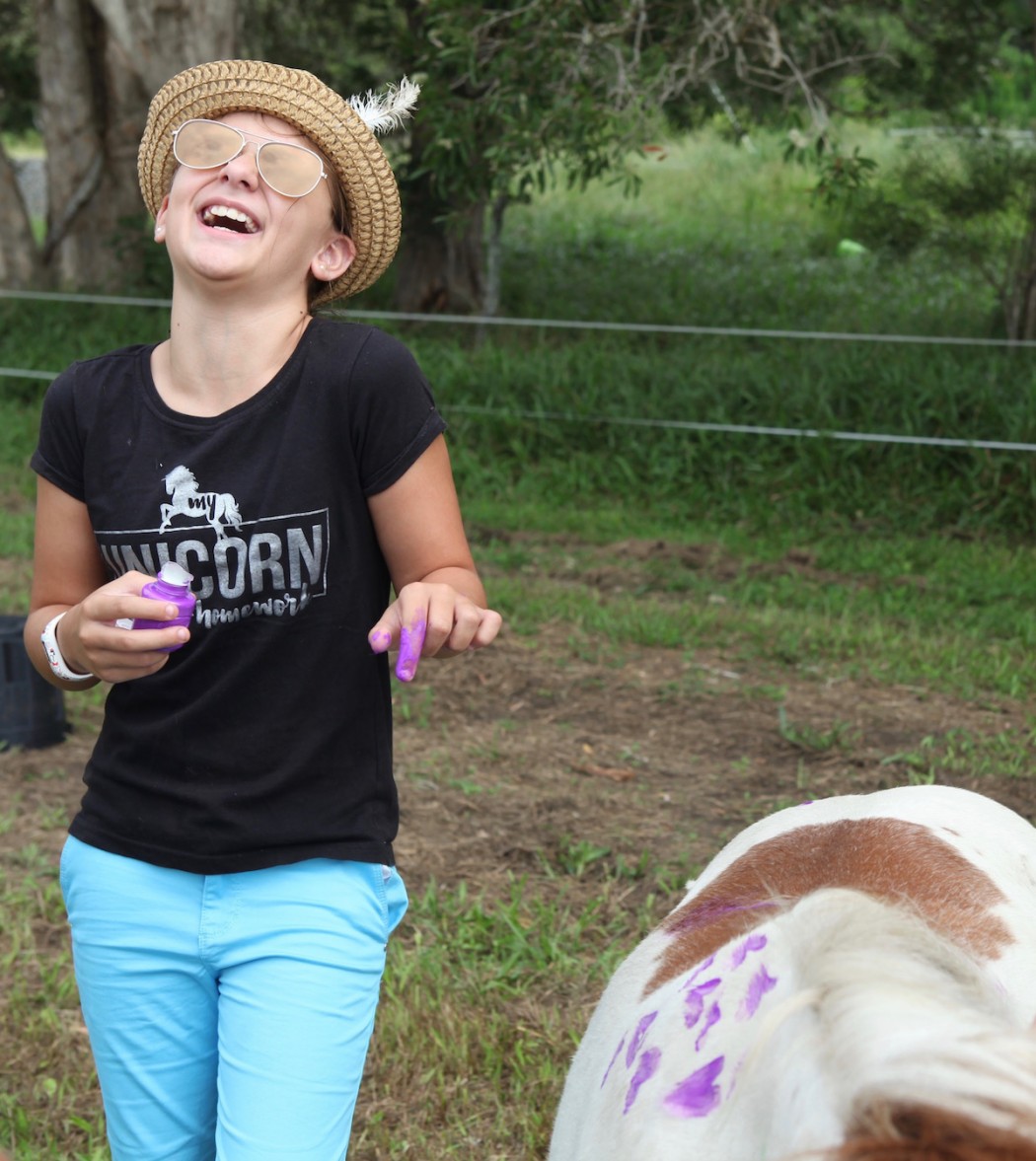
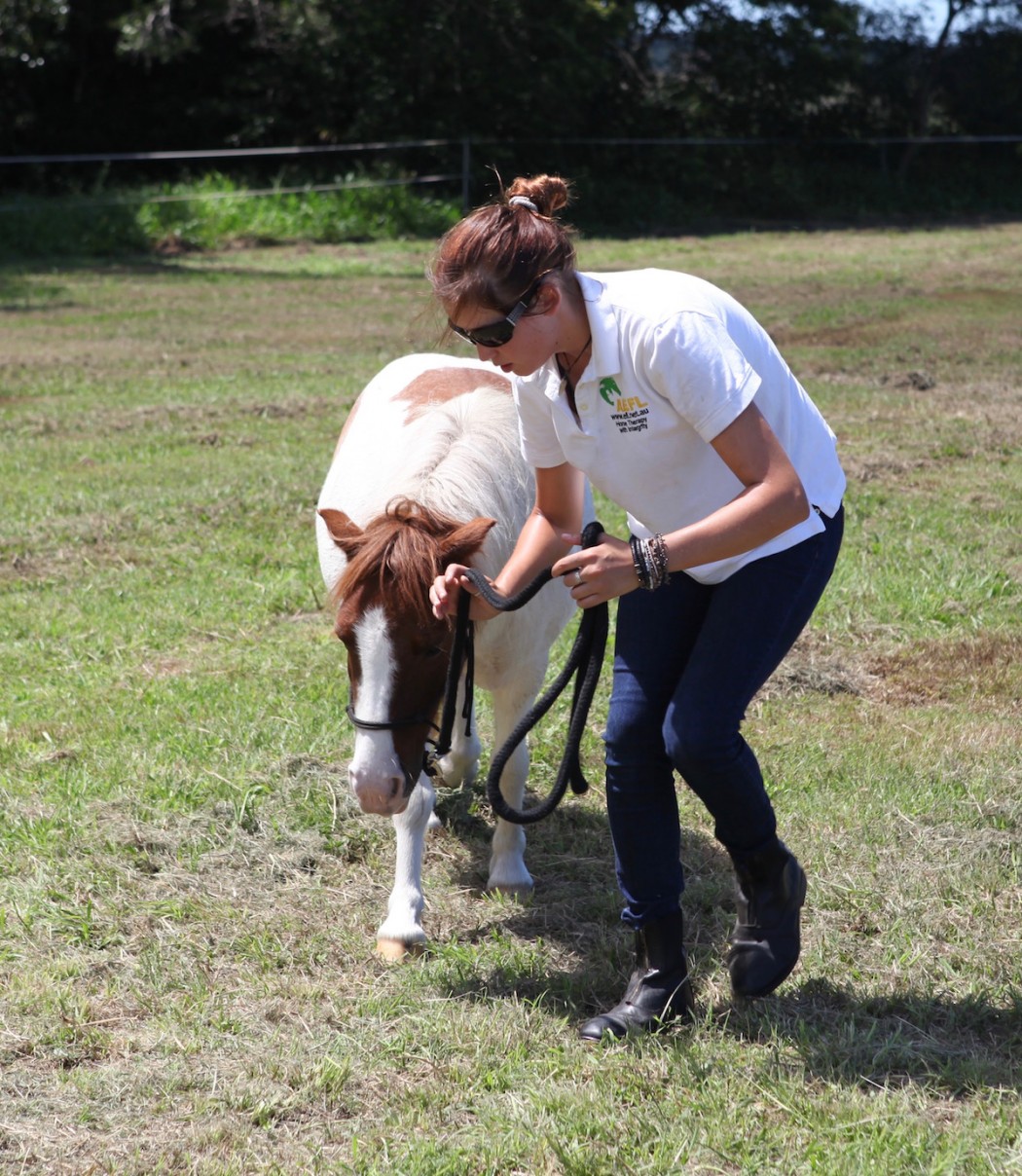
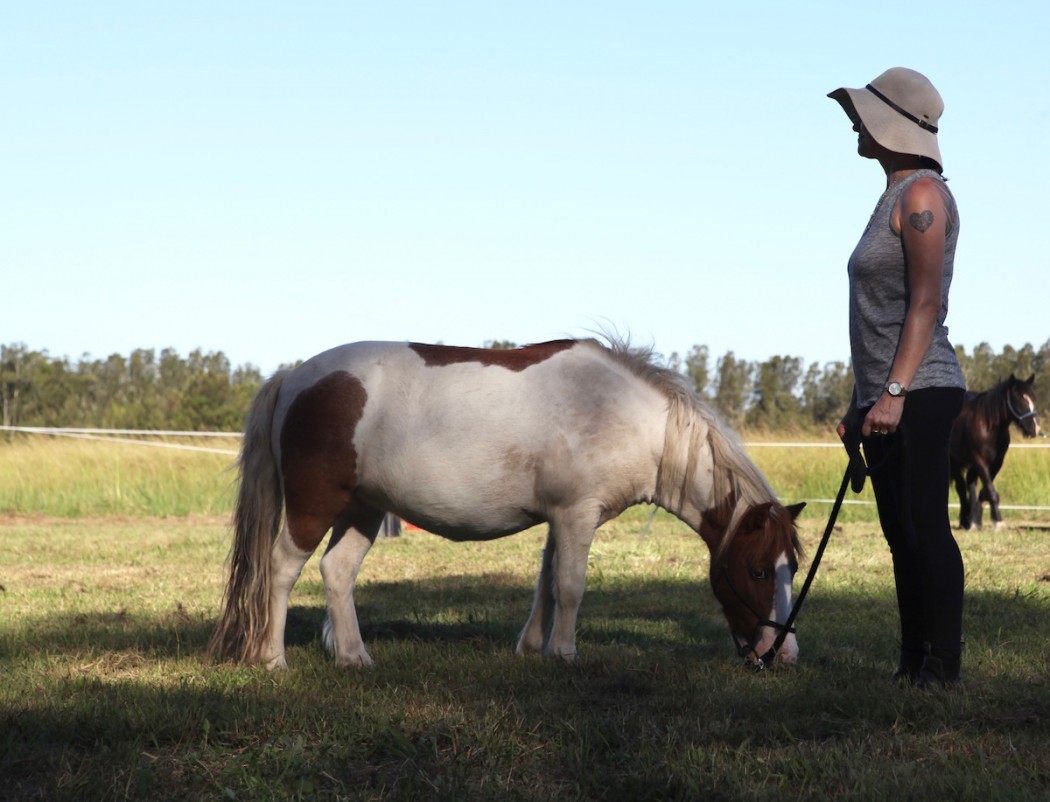
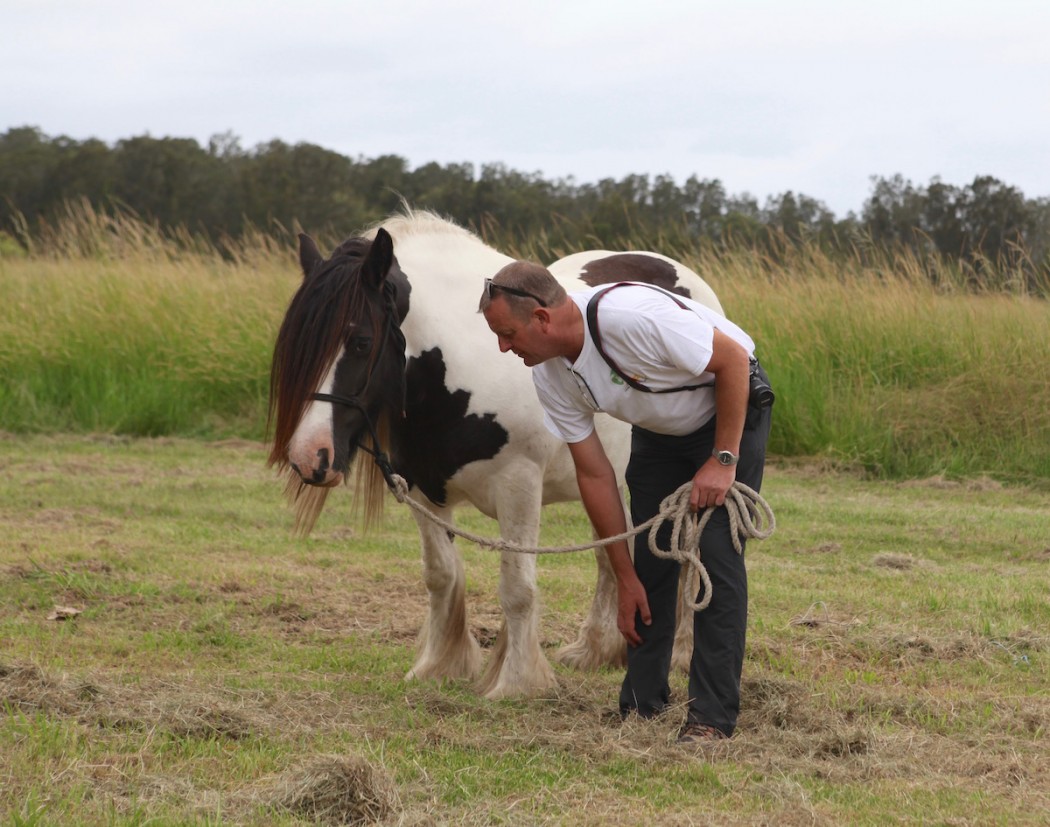
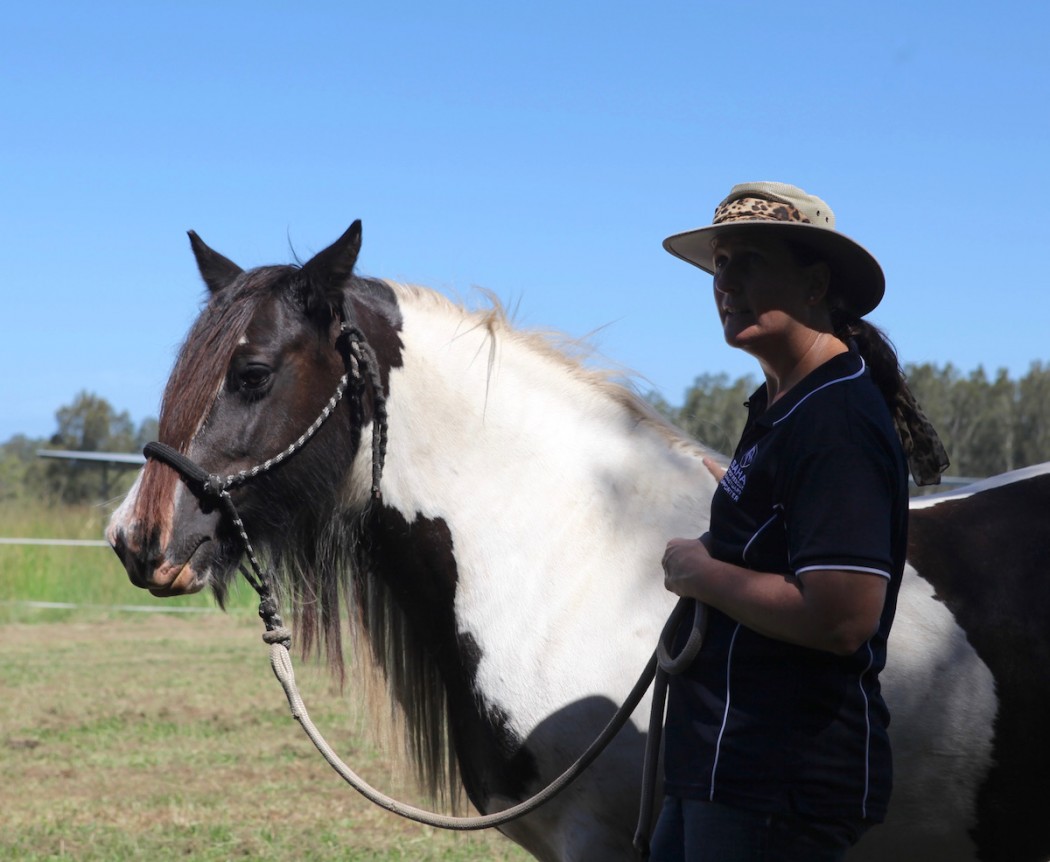
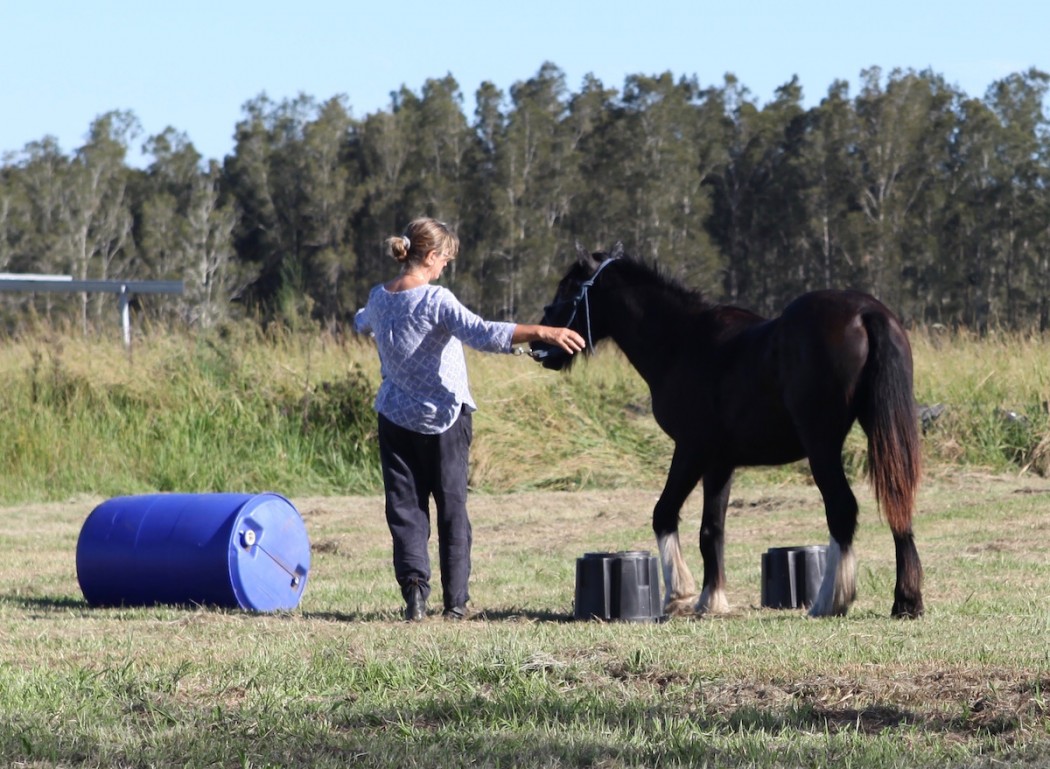
Captions: Sometimes it’s fun to just ‘paint a pony’. Irish aka Louise, gets down to Nina’s level. Magnolia hanging out with Nina. Dave shares a moment with Sweet Cheeks, Cathy Binz my fellow SAHA trainee facilitator. The little yearling Maddie and I enjoy some bonding time.
For more information on EFL go to: https://www.efl.net.au/
AEFL is the Platinum Training Provider for IICT – International Institute for Complimentary Therapies.
Candida Baker is President of Save a Horse Australia and editor of HubVibes. This column first appeared in the March edition of HubVibes
The post Equine Facilitated Magic appeared first on .
]]>The post Sue Spence’s Horses Healing Humans goes international appeared first on .
]]>It’s not difficult to imagine Sue Spence as a child – she’s talking to me about her childhood in the south island of New Zealand, growing up as the horse-obsessed child of non-horsey parents, and the lengths she would go to go riding. “It really didn’t matter whether it was sleeting, snowing or blowing a gale,” she recalls, “I would get on my pushbike and cycle off to my horse in all weathers. It was the only thing that made me truly happy, and for many years I competed as a show jumper.”
But then trouble reared its head in the form of an unexpected illness. “I’d moved from New Zealand to Australia,” she says, “to Queensland, and I was leading a pretty busy life. I have ADHD, and so for me it was nothing to teach six aerobic classes and then go home and go for a ride, but really I was running on adrenalin. I was the kind of rider that they describe as having a ‘hot’ seat – I could make even a quiet horse jump for the moon!’
But although she felt as if she was coping, in fact 15 years ago her life was rocked to its foundations after she was diagnosed with early breast cancer, and it was recommended that she undergo a double mastectomy and reconstruction. “After 30 years of living life at blistering speed – running fitness centres and show jumping, I realised I had to do things differently,” she says. “I moved to a quiet place in the country, and I began to my training in horse whispering, which meant I needed to use a calmer energy.”
Not that it went so well in the beginning. “The first time I tried to get my horse to walk quietly beside me, I was so pent up with anxiety from the cancer and running my gyms, that I was just like ‘go…go…go!” she laughs. Suffering from acute anxiety after the breast cancer, she had to learn to become calm and still. “Nobody had ever taught me that,” she says, “and my ADHD combined with my natural tendency towards fitness just meant I had no idea how to drop into a still, quiet place.”
Sue’s obvious sense of humour shines through as she tells the story of her immersion into the skills of natural horsemanship. “One of my most amazing mentors has been Ken Faulkner,” she says. “I did a clinic with Ken, and I remember I was having a little trouble getting my horse to do something I wanted him to do, and he said, ‘the problem is you have a lot going on inside.’ I was so annoyed. “What do you mean?” I shouted at him, “I’m perfectly relaxed!!” But of course, I was nowhere near relaxed and he spotted it immediately. It was a life-changing moment and it took a horseman to bring me out of my anxiety,” she says, still – I have to say with what you might call a fanatical show jumper’s slight tone of disbelief.
But after learning the tools of the trade, and discovering what a massive difference it had made to her, Sue’s evangelism for a cause kicked in. Her training as a personal trainer and lifecoach became invaluable when she began to run groundwork workshops for women with issues around boundaries and self-esteem. Some women would break down doing her simple ground exercises, because they had never realised how their body language undermined their verbal language.
The whole point being of course, that natural horsemanship, in whatever manner it is taught, is a physical language that allows the human to become a horse ‘leader’, in a non-threatening, strong way, where the verbal and physical language they use is congruent.
But for anyone who has ever thought that you needed a ton of space, horses and equipment to create what has now become an international program with licenses provided to approved practitioners in three states of Australia, you can think again! Her business, Horses Helping Humans™, and her registered charity, the Horse Whispering Youth Program, started out with exactly the same horses she has all these years later – two Shetlands, Mindy who is 28 and Yogi, her 17-year-old son, Larry a 11-year-old rescue mini-pony who lost an eye and Sue’s beloved 28-year-old Quarter Horse,
“People think that when they come to my place they’re going to see something grand, and they get here, and I still have my little motley mob on less than an acre,” she laughs. “But as the program progressed and we began to work with the Department of Youth Services in Queensland, we were able to apply for funding, so now I have a little grandstand, a shade sail over the roundyard and an outside toilet,” she says proudly.
(At the time as building up a business, there was also the family to consider, and if you happen to be a Bacholerette follower you may have noticed Sue’s name used in a completely different context – as the mother of Gold Coast entertainer Apollo Jackson, who was recently a hot contender on the show, and has inherited not just his mother’s energy levels, but also her love of horses.)
For those who might assume that at some point along the way strategies, business-plans and trademarks would have been part of her thinking, she’s still in awe at how the growth of the program has pretty much taken care of itself.
“I can’t even begin to tell you how much serendipity is a part of what I do,” she says. “It’s as if the universe wants HHH out there. Just for one example – when I ran a corporate workshop in Rockhampton one of the practitioners was a business man who told me I needed to go home and protect my IP. I didn’t even know what was! Then later on he asked me again if I’d done it and when I said no, he basically told me I had to do it. I was terrified because I didn’t understand it at all, but then I said to him, well, can I set the license up the same way they did with Les Mills Body Pump licenses, because I can do that – and so that’s what happened. Everyone is trained to a certain level, it’s easy to run and it’s all been based on the Les Mills model because I was a fitness instructor!”
In Rockhampton more synchronicity took place when the local Heritage foundation stepped into support the program. “The people who wanted to start it had no space, and no horses,” she says cheerfully, “so that was going to make it a little difficult, but the Heritage park offered their heritage horses and use of the park and so we were able to set it up.”
In New Zealand it was a magistrate that decided the country needed the program for repeat offenders, and that is exactly what it is being used for. “In Victoria, on the Mornington Peninsular, the license has been brought by a very high-level Parelli practitioner who has an indoor arena, an outdoor arena and a huge American-style barn,” she says, “so really you can see it’s just spreading its wings in whatever way it can.”
The license fee includes all training manuals, the training of a facilitator, public relations, visits from Sue to various local businesses to promote the program and connection to youth service and other government agencies. “What we do is that the facility that is going to run it is fully operational with clients booked from day one,” she says, “people are 100% set up to run it by the time it opens with full backing from their community.”
One of the reasons why the program is so popular with the Department of Youth Services is that they can measure its success. “The essential point of the program – no matter who else it is used for, is that it’s aimed at disadvantaged and at risk youth,” Sue explains. “After thousands of teenagers have gone through this program, they are able to track the success of it by the number of teenagers who have gone on to university, or improved their performance at school, or stayed in school when they were in danger of dropping out – that’s why we have such a good reputation, and why it was so important to make the licenses are done properly.”
Horses Helping Humans also has a connection with Griffith University whereby interns do up to 50 hours volunteering as part of their degrees. “For us to have volunteers who are studying psychology, criminology or business is priceless,” says Sue.
All the students the program works with are referred by youth and family services, school chaplains or counsellors, mental health organisations, child protection, homeless youth and the Justice Department.
It perhaps wasn’t surprising – or only surprising to Sue at any rate – that a publisher became interested in her story. “When they first rang me they left a voice message,” she says, “and I was so busy that I hadn’t even got around to to calling them back, but a friend who’s involved in writing heard the message and said to me, ‘Sue, Pan Macmillan are one of the biggest publishers in Australia, call them back NOW!’”
She did, and a contract followed – but for Sue whose ADHD does not allow her to sit still for long, writing the book was just too hard. “I can’t write a shopping list without getting bored,” she says. “I had no hope with the book.”
Enter serendipity again. “I was at the hairdressers and I was talking about my problems with the book,” she says, “and this woman popped her out from a dryer a few chairs down, and said, ‘Sue Spence! Is that you?’” It turned out to be an old friend of mine who was now working as a transcriber – and she offered to come and transcribe my words for me, so I could walk up and down as much as I liked while I dictated my words, and she would write them up. I think we did the book in record time!”
The book gained Sue Australia-wide publicity that brought in new supporters, and even more ideas for how the program can expand into the future. In the meantime the first Horses Helping Humans conference is taking place soon on the Mornington Peninsular, and Sue is in huge demand as a public speaker right around Australia. I wouldn’t be surprised if you could make that right around the world within a few years – a bit of serendipity allowing!
This story first appeared in the December issue of HubVibes – to subscribe to the free monthly magazine go here: equestrianhub.com.au/publishing/
To find out more about Sue Spence and the work she does, go to: Horses Helping Humans . In 2014 Sue Spence received a Women In Business Awards for Community Dedication and in 2016 she was awarded a Business Award for Creating Change.
The post Sue Spence’s Horses Healing Humans goes international appeared first on .
]]>The post The White Horses of the Camargue appeared first on .
]]>When I was a five-year-old, living in London, my father went on holiday to France, and visited the Camargue region.
Knowing already what his horse-mad daughter would want as a present he brought me back a book – Crin Blanc – (English translation: White Mane). It was black and white still shots from the 1953 short movie, which told the story of a young boy who tames a wild white stallion, Crin Blanc, so infuriating the locals that they hunt the pair, until the boy and the horse choose to disappear forever into the sea. The film won numerous awards including the short film Palme d’Or at the Cannes Film Festival.
Along with Black Beauty, My Friend Flicka, Tam the Untamed (any Australian readers remember that now very politically incorrect book?), Champion the Wonder Horse and a bit later The Silver Brumby, Crin Blanc became one of my all-time favourite books. It was in French, but the story was pretty self-evident, and from the time my father gave it to me, I was determined that one day I would go to the Camargue and ride a horse. (In fact as I child I was determined I would go and tame a wild stallion and bring it back to England, but dreams do become more realistic as we get older!)
So there I am – 57 years (yes you read that correctly) later, cantering along on Tato, or actually more like galloping along on Tato, a sturdy 14.3hh perfect representation of his breed, in the company of the manager of the ranch I’ve chosen to ride at. He’s on his part-bred Camargue/Lusitano five-year-old who still thinks every stick is a horse-eating monster, whereas Tato, fortunately has seen it all before. Despite that, though, he’s definitely forward, keen to go, soft-mouthed, and easy to ride.
There’s a minute, as we gallop along the edge of a small river, which has a herd of young horses, foals and mares on one side, and on the opposite side a large herd of the famous Camargue black bulls, where I actually have time to think – “This is the perfect moment.”
I have had, as the French say, ‘la chance’, because the threat of wet weather has kept everybody else away. Thanks to having spent a year working in French stables as a teenager, my ‘horse’ French is up to par enough so that at least Patrick, the manager of La Cabane du Daladel, and I can communicate on all aspects of horse care. Patrick is training his young horse, Crom, for bull-work, one of the main disciplines for the Camargue horses.
It’s a sad fact that there are actually no herds of true wild horses left anymore, but the reasoning behind the decision to allow registered breeders was to stop in-breeding or accidental diluting of the bloodlines.
In 2003, three registration categories were created to identify Camargue horses: one the pure Camarge – horses registered in the stud book, foaled and identified in the Camarge, branded before weaning and from a ‘manade’, a small semi-feral herd of which only 45 exist; the Carmarge hors manade – horses registerd in the stud book, foaled and identified in the Camargue from the select list of private breeders and the Camargue hors bercau – horses registered in the stud book, foaled and identified outside of the Camarge to registered breeders.
Thanks to these measures, the ancient blood-lines of the Camargue horses, considered to be one of the oldest breeds in the world, will be safe forever. For thousands of years these horses have lived in the delta of the River Rhône, a wetland marshy area which these days is a massive national park.
Patrick tells me that the Camargue horses in the main live a: “good life”. Those brought in for regular trail-riding work – which of course if the fate for many of them – are lucky. “They work from April to October,” he says, “and then they go back out into the marshes.”
And when he says marshes, he means marshes. When we are not trotting or cantering along the sandy paths between the lakes and wetlands, we are picking our way through water which varies from a few inches deep to well up to Tato’s stomach, so that we are almost swimming and my feet are somewhere around Tato’s head trying to keep my boots dry!
What is extraordinary to me is that not only do these horses cope with this environment, they positively thrive on it. Thanks to the fact that the water of the Rhône is sweet rather than salty, the somewhat unappetising looking stringy grasses are apparently full of nourishment, and the marshes too are full of herbs and different sorts of grasses. Patrick tells me working horses are fed once or twice a day, but normally just with hay, and are usually let out at night to graze. I have to say I did not see one skinny horse during our four-day visit there.
I don’t know about other ‘ranches’ but at La Cabane du Duladel when a horse reaches retirement age from its work, it’s put out to pasture with the foals and mares, until, as Patrick elegantly puts it, “one day we find him asleep forever”.
So one thing (as a vegetarian) that concerned me of course, is the ‘bull’ work, but in the Camargue, it is literally that, rather than bull-fights. The ‘guardians’ – horse-riders – use their horses to round-up the bulls, but also in fetes and street events throughout the year where the bulls are galloped with through the town, while young men jostle for the privilege of hanging onto a bull’s horns! It sounds highly dangerous, but in fact the street work with the bulls and horses is much safer than the ‘tauromarchie’, or bull-fighting in the arenas where the young men have to remove a string tied around the bull’s horns, and where a fresh bull is brought in every 15 minutes.
The best bulls live to be up to 40 years old, and some are so famous they even have their own statues.
At one point, as we stop and gaze at a herd of cows with their calves, their horns just beginning to take on the beautiful lyre-shaped points they grow as adults, Patrick looks pensive. “I think,” he says, “in the Camargue we love our bulls even more than our horses.”
Watching him sit Crom as he dances his way around the marshes, and how he gently reassures him, I think – or hope – he’s probably teasing me.
The family herds in the Camargue are so important that when we ride into the middle of the massive marshy area where the mares and foals are eating, all Patrick has to do is click his tongue and call and they all make their way towards us, gently saying ‘hello’ to our horses and generally showing the calm temperament that their breed is known for right from the start.
Some researchers believe that the Camargue horses go back as far as the small Paleolithic Solutré horse which was hunted for meat. The horses were appreciated as riding mounts by the Celtic and Roman invaders, and blood lines of the Iberian horse have been found in their DNA. In fact, the original Spanish ‘Jaca’ horse was probably a cross between the Celtic pony and the Camargue. It was later improved by crosses with other horses brought in by the Moors, and because of its cross to the Jaca its DNA found its way into the Americas where breeds such as the Chilean and the Criollo show some of the characteristics common to the Camargue horses.
So what are the characteristics? My little Tato was a brilliant example of a pure Camargue horse – their average heights being from 13.3hh to 15.2hh maximum. He was broad and stocky with a short neck, deep chest, obviously strong legs, and a beautifully full wavy mane and tail that I had plenty of time to gaze at. His ears were small and forward – and as Patrick said, “he loves his work”. His trot was even and flat, and his canter too. With the modern version of a working Camargue saddle on he was so comfortable I could ride all day, and his back end was as well-muscled and round as any Quarter Horse.
Over thousands of years, their hooves have adjusted to the marshy ground, becoming hard and tough with very flat wide soles. Put one of our thoroughbreds in there and I swear they’d have an abscess and thrush in a week or two!
The two hours seemed honestly to pass in ten minutes – we passed swans, and water-birds of all kinds, an otter in the river, and began to make our way peacefully home.
There’s only one problem with ticking something off your bucket list, I thought as I reluctantly dismounted – it means it’s unlikely to happen again – but it’s an experience I’ll certainly never forget. I hope little Tato enjoyed it too, and that he too, when he reaches retirement age will live out his days in his marshy wetland home.
We’d chosen to say in at the Mas du Notaire winery in Gallician, in the heart of the Camargue. The beautiful old farmhouse has several forms of ‘gites’ – accommodation – attached, including access to a kitchen and refectory. We were there on the exact weekend that they were reliving the glory days of summer, and bulls and horses seemed to be everywhere in the town – in fact everywhere we went in the Camargue the white horses seemed determined to find me – we saw them out in the marshes, making their way across roads and rivers, and in every town we drove through.
The towns too, are famous for their beauty – Arles, of course, where Van Gogh lived for a year, and was at his most productive, and a special mention for the amazing cathedral in Saintes Maries de la Mer, dedicated to Saint Sarah, the patron saint of the gypsies. Another non-horsey high-point was definitely the ornithological park only a few kilometres out of Saintes Maries de la Mer, with its flocks of pink flamingos.
The Camargue is truly a magical place – if it isn’t on your travel bucket list, I suggest you add it, you won’t regret it!
A version of this story first appeared in the HubVibes ezine: https://equestrianhub.com.au/publishing/
For trail riding contact: La Cabane du DALADEL
Patrick Fargier
D 58 – 30600 MONTCALM (between Aigues-Mortes and les Saintes Maries de la Mer)
Tel / Fax 04 66 73 52 08 – 06 20 78 03 74
www.chevaux-listel.camargue.fr
For Mas du Notaire go to: https://shop.famillerambier.com/en/lodging/guest-houses-of-the-mas-du-notaire-in-camargue/
For the Ornithological Park go to: https://www.parcornithologique.com/https://www.parcornithologique.com/
The post The White Horses of the Camargue appeared first on .
]]>The post Solstice New Moon appeared first on .
]]>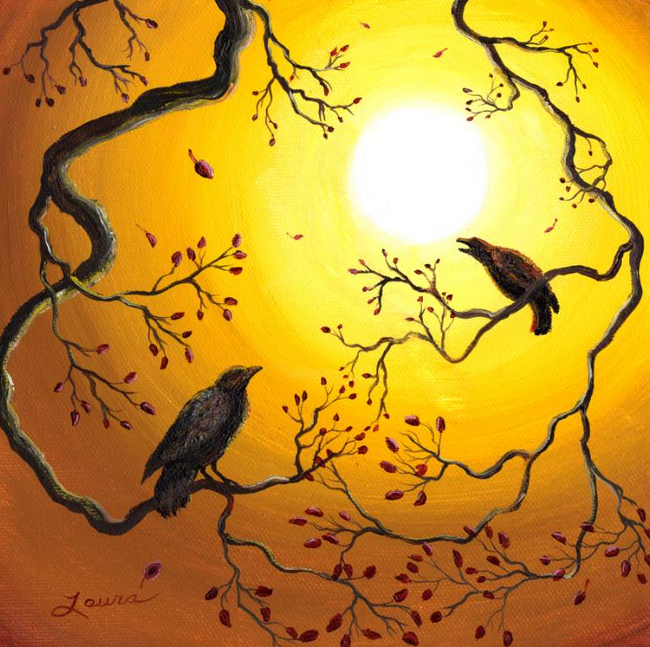
Harvest Crows by Laura Iverson
This post in an excerpt from Kim’s New Moon Newsletter.
NEW MOON – June 23, 2017 @2 Cancer
Los Angeles – June 23 – 7:31 pm
New York – June 23 – 10:31 pm
London – June 24 – 3:31 am
Sydney – June 24 – 12:31 pm
Hi Everyone, and Happy New Moon and Mid-Winter/Summer Solstice!
This is a particularly potent New Moon, being so close to the Solstice. You’ll want to set strong intentions – where ‘strong’ means intentions that absolutely resonate with what you want to experience in your life.
Here are some quick, sign by sign tips for tuning in.
 ARIES: Get playful and feisty in the home. Engage with the family, go on a cleaning spree, clear the air with clan members and enjoy some good home cooking. #FindYourTribe
ARIES: Get playful and feisty in the home. Engage with the family, go on a cleaning spree, clear the air with clan members and enjoy some good home cooking. #FindYourTribe
 TAURUS: Start a new course of study, join a community project, get friendly with the written or spoken word. What do you want to say, teach, learn? #SpeakYourHeart
TAURUS: Start a new course of study, join a community project, get friendly with the written or spoken word. What do you want to say, teach, learn? #SpeakYourHeart
 GEMINI: Indulge and cherish your core values, develop a new talent and be MORE of who you are. Think about what supports your life and love it up. #YouAintDoneYet
GEMINI: Indulge and cherish your core values, develop a new talent and be MORE of who you are. Think about what supports your life and love it up. #YouAintDoneYet
 CANCER: This marks a new chapter in your life. Open the door to your dreams by being true to yourself. Let go of old patters and start something new. Something YOU. #MyMakeOver
CANCER: This marks a new chapter in your life. Open the door to your dreams by being true to yourself. Let go of old patters and start something new. Something YOU. #MyMakeOver
 LEO: Commune with your unconscious. Take time to reflect on your dreams. Create, walk in nature, engage with spirit, meditation, yoga, healing. Serve. #InnerJourneys
LEO: Commune with your unconscious. Take time to reflect on your dreams. Create, walk in nature, engage with spirit, meditation, yoga, healing. Serve. #InnerJourneys
 VIRGO: Hang out with your like-minded others. Their aims and goals are linked to yours and sharing aspirations will fuel them. We all succeed together! #ToHaveAFriendBeAFriend
VIRGO: Hang out with your like-minded others. Their aims and goals are linked to yours and sharing aspirations will fuel them. We all succeed together! #ToHaveAFriendBeAFriend
 LIBRA: Your career takes a turn for the new and improved, with a chance to carry more responsibility for much greater reward. Better do what you love. Now! #AmbitionRules
LIBRA: Your career takes a turn for the new and improved, with a chance to carry more responsibility for much greater reward. Better do what you love. Now! #AmbitionRules
 SCORPIO: Take your mind, body or spirit somewhere it’s never been before – meditate, travel, read, learn. You’re after new horizons, explorations and the unknown. #NewHorizonsCall
SCORPIO: Take your mind, body or spirit somewhere it’s never been before – meditate, travel, read, learn. You’re after new horizons, explorations and the unknown. #NewHorizonsCall
 SAGITTARIUS: Intimacy and intensity blazes new trails. Go ahead and take a leap in the dark. You’ll never know, if you don’t. Emotional risks pay off. #LifeOnTheEdge
SAGITTARIUS: Intimacy and intensity blazes new trails. Go ahead and take a leap in the dark. You’ll never know, if you don’t. Emotional risks pay off. #LifeOnTheEdge
 CAPRICORN: Partnerships of every kind ignite you desires, heating up energy and leading you places you didn’t know you wanted to go. That’s the plan. You go there. #CollaborationConnection
CAPRICORN: Partnerships of every kind ignite you desires, heating up energy and leading you places you didn’t know you wanted to go. That’s the plan. You go there. #CollaborationConnection
 AQUARIUS: A whole knew relationship to health and well being is waking up. You feel more, do more, create more, when you treat your body like your very best friend. #ChangeISyourHoliday
AQUARIUS: A whole knew relationship to health and well being is waking up. You feel more, do more, create more, when you treat your body like your very best friend. #ChangeISyourHoliday
 PISCES: Creativity springs from a well of romantic notions. Write, play, choreograph, sing, act, dance. The muse speaks to you through love. Listen in! #TheFunBegins
PISCES: Creativity springs from a well of romantic notions. Write, play, choreograph, sing, act, dance. The muse speaks to you through love. Listen in! #TheFunBegins
 Courses at GoodVibeAstrology.com
Courses at GoodVibeAstrology.com
Dream Come True Astrology – Starts July 25th
Dream Come True Astrology – Starts July 25th
Our next course at GVA starts in July and will be open to the complete astro novice as well as the sage and savvy. In Dream Come True Astrology, Jeannette and Kim play with a variety of LOA manifesting techniques to help you point your life in the direction you want to go. Be it love, money, career, health, home, travel, creativity, spirituality or partnerships, this course will pave your path with gold. More Details …
The Karma Course has just wrapped up. You can listen to all 7 Recordings, read supplementary material, conversations and join in on the conversations, discussing your own chart and the Karmic and past life implications. Sign up HERE.
Align with the Stars
Our nest call is on July 11th where we’ll be talking about astrology and effortless manifesting. All welcome! Details here …
Astrology Readings from Kim
My Astro Shop is open for a select number of readings in 2017. Please email first for availability.
My Writer’s Corner updates for readers and writers
Best wishes to you all. Have a wonderful, clear intention New Moon!
xxxKim
 Check out the NEW GoodVibeAstrology.com, and find out more about me and my writing, plus the Daily Astro Flash on Kim Falconer Author – Facebook, new release on AvaSykes.com, archives on 11th House Blog, Kim Falconer.com, mood boards on Pinterest, and more on FaceBook, Youtube and Twitter. I post over at the Supernatural Underground on the 16th of every month and most days on Save the Day Writer’s Community on Facebook. New on Instagram with @A.K.Wilder.
Check out the NEW GoodVibeAstrology.com, and find out more about me and my writing, plus the Daily Astro Flash on Kim Falconer Author – Facebook, new release on AvaSykes.com, archives on 11th House Blog, Kim Falconer.com, mood boards on Pinterest, and more on FaceBook, Youtube and Twitter. I post over at the Supernatural Underground on the 16th of every month and most days on Save the Day Writer’s Community on Facebook. New on Instagram with @A.K.Wilder.
The post Solstice New Moon appeared first on .
]]>The post A Bob or Tim by any other name would be round or thin? appeared first on .
]]>Don’t you love complex scientific research that spends time and money to come up with results that everyone knows already? Like the recent buttered toast study, where several scientific investigations found that grandma was right: toast dropped from a table falls butter-or-jam-side down at least 62 per cent of the time.
Then there was my favourite research study of 2016: the finding by St Andrew’s and Glasgow universities that the opposite sex becomes more than 25 per cent more attractive to people drinking alcohol.
A corresponding study at Bristol University went even further, discovering that students of both sexes found people 10 per cent sexier after just a measly 15 minutes of drinking and two beers. (Also proving that British universities have no trouble signing up willing students as research subjects.)Now, on a different tack, a major study involving hundreds of participants and researchers in France, Israel and the US, and just published by the American Psychological Association, has discovered that people often look like their names; specifically that men named Bob mostly look like men named Bob, and that Tims actually look like chaps called Tim.
Putting aside the question of why an international Bob and Tim research study should be conducted in the first place, the investigation found that participants shown a photograph and given a list of five names, matched photographs of the Tims and Bobs to their names with 40 per cent accuracy. Furthermore, a computer using a learning algorithm matched 94,000 facial images to their correct names 64 per cent of the time.According to the chief researcher, Dr Yonat Zwebner of the Hebrew University of Jerusalem, this was because of the cultural stereotypes we attach to names. People subconsciously altered their appearance to conform to the cultural norms and cues associated with their names: “Those areas of the face controlled by the individual, such as hairstyle,were sufficient to produce the effect,” said Dr Zwebner.
Dr Ruth Mayo, co-author of the Bob and Tim study, says we’re subject to social structuring from the minute we’re born, not only by gender, ethnicity and socio-economic status but by the simple choice our parents made in giving us our name. “These findings suggest that facial appearance represents social expectations of how a person with a particular name should look. A social tag may influence one’s facial appearance and our facial features may change over the years to eventually represent the expectations of how we should look.”
And why were people able to differentiate a Bob from a Tim? Because, the study found, Bob was “a round-sounding name” so Bobs were thought to have round faces, while Tim “sounded thin”, with a narrow face. ‘
Hmm. Speaking as a Robert or Rob (not a Bob, thanks), it seems to me the study missed an important point. The parents who apparently laid down these rules when naming their boy babies, would actually have called them Robert and Timothy, not Bob and Tim, maybe with quite different cultural and social expectations.According to the Behind the Name website published simultaneously in the Journal of Personality and Social Psychology, the “popularity ratings” given by hundreds of respondents to Bob and Robert, and Tim and Timothy, vary considerably.
Robert scores magnificently for Masculine, Strong, Classic, Mature, Wholesome, Refined, Serious and (oh, oh) Nerdy. Bob, alas, while also getting a Masculine, Strong and Wholesome rating, features mainly in the Informal, Common, Rough, Boring, Comedic, Simple and Unintellectual departments.
Of course this is unfair and very, very wrong. Especially the fat-faced, Boring, levitra and alcohol Common, Simple, Rough and Unintellectual slurs. Amongst many other fabulous exemplars of the name, let me hasten to present Bob Dylan, Bob Hawke, Bob Marley, Bob Hope, Bob Carr, Bob Ellis and Bob Woodward.
Similarly, although Tim scores well in the Youthful, Masculine, Strong, Informal, Wholesome, Comedic and (oh, oh) Nerdy polls, Timothy’s ratings in the Mature, Classic, Refined and Intellectual departments beat Tim’s and Robert’s names (and, of course, poor Bob’s) hands down.
All of which should be taken with a pinch of salt when you consider that perhaps Australia’s two favourite sons, intellectual and otherwise, are the Tims Minchin and Winton.
Incidentally, the Behind the Name site has some interesting respondents’ ratings for the name Donald. Published two years before the US election, the areas in which Donald dominated are Bad Name, Feminine, Modern, Informal, Common, Urban, Devious, Rough, Simple, Comedic, Unintellectual and Strange.
(Sincere apologies to the Dons Bradman, Corleone, Quixote, Draper, Pleasence, Chipp, Sutherland, O’Connor and Duck.)
Robert Drewe’s long-awaited new novel WHIPBIRD will be published by Penguin/Viking on July 31: penguin.com.au/books/whipbird-9780670070619
The post A Bob or Tim by any other name would be round or thin? appeared first on .
]]>The post Jenny Dowell on life after Debbie’s departure appeared first on .
]]>I’d always said to friends in Melbourne that if Goonellabah flooded it was time to build an ark! Well, we had water throughout our living area when the drains failed to cope with the 400mm that fell in 24 hours. But that was trivial compared to the mess that Debbie left when she finally departed. The Wilsons River reached 11.6m – close to the 1974 big flood and the 10.6m levee was overtopped, as we always knew it would be when the inevitable big flood came.
When the flood waters receded and all of us got down to work, cleaning, laundry and door knocking to check on people’s welfare, I heard my fair share of distressing stories but even when people had lost most of their possessions, there was a general response “I’m OK, there are people much worse off than me”.
Through the tears there were often smiles and hugs as people connected like never before. The Lismore Come to the Heart symbol has always been more than a marketing logo. Many of us have worn the little heart badge as a sign of pride that we live in Lismore but after this flood event, the Heart has become a symbol of rebuilding and connection to each other. When the Black Sombrero in the CBD hung a Heart flag on its door to indicate it was reopening, requests came for more, so sewing bees were arranged at the Black Sombrero for these flags to be produced for other businesses as they reopened.

Lifeline NR set up in the Pavilion at Lismore Showgrounds to help people affected by the flood by distributing donated goods.
The heart badge became a sign of determination and resilience and council has noted a steady stream of residents buying the badges to wear and give to others to lift their spirits.
The stories of loss and grief will continue for many weeks and months and even longer for some but this community is strong and connected with someone always at hand to bear the load when things get too hard.
Thousands of people evacuated and while much of the contents of homes and businesses was secured and lifted, the height of the flood and the force of the water was greater than most people expected. As readers will have seen, the damage to homes and businesses in the CBD, North and South Lismore and parts of East Lismore was immense with thousands of tonnes of damaged goods piled up on footpaths as the recovery commenced.
The good thing – from every disaster, the strength of the community is demonstrated in the very difficult and long recovery stage after the emergency has passed.
An army of volunteers mobilised through Lismore Helping Hands Facebook page to attend thousands of homes and businesses. These volunteers helped clean premises and provide essential material aid and food to the people affected. Hundreds of RFS and SES volunteers from around the state provided much of the heavy lifting and high pressure hoses to help clean out buildings as people tried to salvage important items.
As the emergency passed, the disused Lismore Railway station was a hub for the volunteers to form teams and for people to get food, bedding and clothing. Lifeline’s regional warehouse received tonnes of financed items and just as quickly was distributing goods to affected people. It wasn’t long before it became obvious that the warehouse was simply too small to cope with the supply or demand so a league Pavilion at the Showgrounds became the central collection and distribution centre not just for Lifeline but for many other charity groups.
The official NSW Government sponsored Flood Recovery Centre was also established in East Lismore to provide people with a one-stop-shop for advice on insurance, grants, fair trading, small business, primary industry assistance and more.
People who were unaffected by the disaster flocked to help and shopping in the supermarket in mud spattered clothing and rubber boots didn’t even cause a raised eyebrow, but the emotional toll of the flood was obvious despite the generally positive spirits. In the days after the water had gone, every heavy rain shower brought back feelings of dread. The need for material aid for affected residents was also obvious and the community responded.
Lifeline Northern Rivers warehouse in South Lismore was soon overwhelmed by the sheer volume of donated clothing, furniture and household items so the opening of the Pavilion at the Showgrounds provided not only a much needed large space for donations and distribution but the opportunity for all charities to work together.
The Helping Hands hub remained the centre for donations of non perishable food, willing hands for heavy lifting and cleaning and teams of skilled people to undertake welfare checks in the most vulnerable people until it closed on April 23.
Our council, including Mayor Isaac Smith, has been magnificent as were the emergency services volunteers who came from far and near to help. Among the volunteers who put their own lives on hold to help others, new leaders merged with the temperament and skills to mobilise teams of people who had never worked together before. In my opinion, those leaders – many of them in their early 20s – will be names to note as community leaders of the future.
Three weeks after the flood, there is still much to be done. Hundreds of residents are not back in their homes and some may never be able to return. Many people will continue to need material help, many more will require emotional support and fundraising will continue to be required on top of the welcome financial assistance from government.
It is hoped that the Lismore Helping Hands Facebook page will continue with people linking up to help each other not just in relation to this flood event but for the future.
Volunteers can only do so much and it would be ideal to see an existing larger organisation take on the coordinating role of overseeing the wellbeing of flood-affected people into the longer term. Volunteers will still be needed to contribute a few hours or a day when they can but I think that the overarching coordination requires a paid project officer with the structure of a larger organisation to provide the framework. We cannot let the aftermath of the flood result in a loss of community cohesiveness or wellbeing. That would be an indictment on all of us and a tragedy that we must avoid.
The post Jenny Dowell on life after Debbie’s departure appeared first on .
]]>The post Robert Drewe on Australians penchant for rhyming slang appeared first on .
]]>You might have read of the death the other month – at the nicely mature age of 103 — of one of Australia’s real sporting treasures, the champion jockey Edgar Britt.
You may have learned, as I did, that in a career spanning 30 years, Britt rode 2000 winners in Australia, the US, Britain, Ireland and India. And that leaving the Australian turf forever in 1935, he was feted abroad by British royalty and Indian maharajahs. At the height of his career in 1947 he was invited by George VI to become the dr. ed questionou homens e mulheres King’s Jockey, and he rode 970 winners in England.
At 150 centimetres (not quite five feet) and 45 kilos (seven stone), Britt was a character with, as he modestly said of himself, a reputation for “dash, reflexes, balance, judgement, pace and an unflustered manner”. In the tradition of successful jockeys everywhere, he married a glamorous showgirl, Tibby Geoghegan, a dancer at Sydney’s Tivioli Theatre who was 27 centimetres taller, and they had four daughters.
On retirement in 1959, he returned to Australia and became a racing commentator and a columnist for many years for Sydney’s Sunday Telegraph.
I learned all this from his obituary. In my childhood I knew nothing of his racing fame. But I certainly knew his name. In our household, thanks to my father’s penchant for Australian rhyming slang, “the Edgar Britts” was a euphemism for diarrhoea. All across the nation, it would turn out, Edgar Britt’s name made Australians smirk.
Since World War II at least, Australians – especially Dads – have been adept, like the Cockneys, at turning names, places, jobs and habits into often risqué rhyme. Especially cheeky, male, public-bar euphemisms — if not intentionally malicious then usually pretty rude – based on the names of celebrities of one sort or another, most often sportsmen.
Observing the linguistic niceties required of a family newspaper, I won’t spell all these out. But older readers might be familiar with the term “Adrian Quist”, meaning “drunk”. (Quist was a Wimbledon tennis doubles champion of the 1930s-40s. Nowadays the term has been replaced by “Olivers”, from Oliver Twist.)
Similarly, for AFL fans, a “Gary Ablett” is a tablet, a “James Hird” is faecal matter, and to have a “Stuey Dew” is to vomit. For rugby league followers, a “Gary Jack” is a back, a “Johnny Raper” is a newspaper and a “Ron Coote” is sexual intercourse. Meanwhile, “Germaine Greer” is an ear”, and “Reg Grundys”, as we all know, are underpants.
We also know, only too well, that a “Noah” or “Noah’s Ark” is a shark. Meanwhile, “to do a Harold Holt” or a “Harry” is to bolt, or disappear quickly, referring to the Prime Minister who vanished while swimming in 1967. Maybe he was taken by a Noah.
Traditionally Australian are the terms “Onkaparinga” (finger), based on the South Australian town and the well-known woollen blankets; “Dad and Dave” (shave), after Steele Rudd’s comic characters; and Charlie Wheeler (sheila), after the Australian painter, Charles Wheeler. If people are “Burke and Wills”, like the famously inept Australian explorers, they’re dills. But if they’re just doing a quick glance around, they’re having a “Captain’s” or a “Captain Cook”.
If you’re grabbed by the “Warwick Farm” (Sydney racecourse), someone has you by the arm. Possibly a “Westpac banker” or a “half-back flanker” (a wanker). Perhaps someone from “Steak and Kidney” (Sydney). Maybe it’s a “septic tank” or “seppo” (an American). Better close the “George Moore” (door).
Had a “Barry” of a day? (“Crocker”: shocker.) Perhaps a “Gregory Peck” (cheque) didn’t arrive with your “Zane Grey” (pay) or your “rock and roll” (dole). Maybe your “Malvern Star” (car) broke down and you had to catch the “Uncle Gus” or bus. Incidentally, Uncle Gus is not to be confused with “Uncle Merv”: a perv.
Got soreness in the “Ginger Meggs” (legs); “comics”, as in “comic cuts” (guts); “Barry Beath” (teeth); “Lionel Rose” (nose); “Jack Jones” (bones); or “Ned Kelly” (belly)? Or even worse, a pain in the “Jatz crackers” (testicles)?
Better put your hand in your “sky rocket” (pocket). It’s your “Wally Grout” (as in the former Test wicket-keeper): turn to buy drinks. At the “nuclear sub” (pub).
Many of these sayings have died out, some replaced by newer slang and contemporary personalities. But rarely these days do you hear my father’s favourite expressions, such as “rubbidy-dub” (pub); “Aristotle” (bottle); “billy lid“ (kid); “trouble and strife” (wife); “Johnny Horner” (corner); and “to have a Jimmy Riddle” (to urinate).
Nevertheless I’m still rather in awe of mischievous and imaginative rhyming slang. No surprises there, after spending my childhood fending off naughty schoolyard rhymes to our very own surname.
Robert Drewe’s long-awaited new novel WHIPBIRD will be published by Penguin/Viking on July 31: penguin.com.au/books/whipbird-9780670070619

Whipbird | Penguin Books Australia
Kungadgee, Victoria, Australia. A weekend in late November, 2014. At Hugh and Christine Cleary’s new vineyard, Whipbird, six generations of the Cleary family are coming together from far and wide to celebrate the 160th anniversary of the arrival of their ancestor Conor Cleary from Ireland.
As the wine flows, it promises to be an eventful couple of days.
The post Robert Drewe on Australians penchant for rhyming slang appeared first on .
]]>The post Jenny Dowell – hardly the retiring type… appeared first on .
]]>If I had a dollar for every person who asked me ‘How’s retirement?’ I’d be a wealthy woman. I’m not wealthy of course but life is full of new-found riches so I respond ‘I’m loving it and I can recommend it highly’.
It’s now just a little more than six months since I relinquished my role as Lismore Mayor in September 2016 and many people also ask me what I’m doing with all my free time.
As a firm believer in lifelong learning and challenging oneself, I knew that retirement was not going to be boring or sedentary but I didn’t really have more than a few simple ideas about what I’d do with my time. As you might imagine, I had quite a few invitations to join various community organisations but I took the advice of another politician who retired not so long ago, Don Page, and decided to take a ‘gap year’ or at least a gap six months. I wanted to keep my mind open to opportunities and they have unfolded in many wonderful ways.
My husband Ron and I had planned a three-week road trip to Victoria last October to visit family and for me to attend a high school reunion and a gathering of the Bungalow Girls, eight female student teachers who roomed together in a bungalow attached to a Geelong Teachers College hostel. I also announced that I was suspending my very active Facebook account for several months to make it clear that I was no longer a representative of Council or a conduit to it. I admit that I missed the contact with community during that time but it was also a way of giving necessary clear space for the new Mayor Isaac Smith without the ‘old grey mare’ in the background.
There is something sad and unfair about a retired politician staying on the sidelines and making comments about political decisions so I also resolved never to comment publicly on the voting outcomes of the new Council or to be used to pressure current Councillors on their decisions. I do admit to reading the Council business paper but will not attend meetings and I’ll keep my views on Council decisions to myself.
So apart from that road trip, what have I been up to since September 14?
I was well aware as I approached retirement that I was overweight and too sedentary, had a few aches and pains and wasn’t eating as well as I should. Two years earlier I’d participated in the Cancer Council’s Dance for Cancer and in my efforts to tap dance, I’d joined a gym and become quite fit but in the six months before retirement, I’d lapsed into poorer habits.
Fortunately through being an Ambassador for Heart Health for Women and attending a community heart check morning, I’d been encouraged by Jillian Adams, from Health Promotions here in Lismore to sign up for the NSW Health GetHealthy free phone coaching program. My first phone call from Pierre, my coach, came through on September 16 and from then on, until my graduation last month, I benefitted from the support to set my goals to get healthy.
Having met with the local coordinator of Parkrun in the lead up to its launch in April last year, I supported and walked in the first few Saturday events in Lismore but then dropped away as my motivation waned. But through the GetHealthy program, I set a goal to do something active every day. Mostly that involved walking but soon, to my great surprise, I found myself jogging short sessions. I hadn’t run since I was 11 years old in my first year of high school when I was the only girl Under 12 in October that year and had to run in the interschool athletics at Olympic Park in Melbourne. The embarrassment was immense as I was not at all sporty. So you might imagine my surprise to now find that I can run 5km without stopping and can do it in 33 minutes!
I now run every day for 4-6 kms and have cut out sugar, upped my intake of vegetables, snack less and have lost 14k. I feel fantastic and my back, knee and ankle pains have reduced or disappeared.
Volunteering was also on my ‘to do’ list and as I’d always liked Uniting’s model of Inspired Care, I became a volunteer at Kalina at Caroona in Goonellabah in February. Initially I spent a couple of hours with 6-8 ladies over a cup of tea chatting, reminiscing and laughing at often outrageous stories from their youth. Kay Cleverly, activities coordinator, lived up to her name when she came up with the bright idea that I could teach a group of residents to tap dance while seated. The challenge (apart from my very limited tap skills) was to devise something that would fit on residents’ feet to make a tap sound. The best ideas often come in the middle of the night and so I experimented with the base of drink cans that I collected from the local park, Velcro-ed onto shoes. They work a treat! We’re doing a simple tap dance to Que Sera Sera and having so much fun.
I have also accepted a role as Patron of Jodie’s Inspiration and the Lismore Art Club and continuing roles as Ambassador for the Cancer Council and as Patron of The Rivers College, Kadina campus P&C. Several other Patron roles will come to an end at the AGM of various organisations because my Patron role was linked with the Mayoral position.
My big secret desire during my years on Council was to see if I could act on stage. Although some would say being Mayor was a great preparation, I really had no idea if I could learn lines or take on a character but just before Christmas I fronted up to the Lismore Theatre Company’s Christmas Party, paid my membership and literally put my name in the hat for the evening’s Theatre Sports. I must have played a convincing monkey in a dental surgery and before I knew it I had an email from David Addenbrooke to offer me a supporting role as Aunt Julie in Hedda Gabler. I was stunned and excited! We began rehearsals in late January and opened on March 31 for six performances. ( lismoretheatrecompany.org.au/)
My husband Ron retired more than three years ago and went travelling without me several times while I was fulfilling my Mayoral duties but now I can join him so we are off to France and Italy for a long holiday in late April. I learned French at school but knew no Italian except for a few basic words so I enrolled in Beginners Italian with U3A and have been attending weekly lessons this term. U3A has so many wonderful courses but so far, I’m only enrolled in Italian and the weekly discussion group, Friday Forum.
Of course in the midst of all this activity, gardening and reading remain personal passions that I’ve always enjoyed and to which I can now devote more time. I read 2-3 books a week and have recently written a book review for the Richmond Tweed Regional Library newsletter.
A couple of other surprises have also come my way since I retired. Both directly relate to my role as Mayor and both fill me with that odd mixture of humility and pride.
The first was an invitation to become a Mayors’ Mentors for Local Government NSW, the peak state organisation for Councils. When I was Mayor I was very grateful to have the ex-Mayor of North Sydney, Genia McCaffery as my mentor and I’m now so pleased to be able to support other mayors in their often-challenging role by providing a confidential sounding board and guide.
The second great honour is one that was bestowed as recently as Saturday March 25 when I was awarded an Honorary Doctorate at Southern Cross University in recognition of my services to the Lismore community. As part of the award, given at a graduation ceremony, I was invited to give the Occasional Address for the third time. I owe SCU a great deal – in fact I can honestly say I would not have been Mayor if it were not for SCU. My family moved to Lismore in 1991 so that Ron could take up a Lecturing position here in the fledgling Tourism school. As someone who values education and understands the role that regional universities play, I am absolutely thrilled to be given this very special award.
So as readers can see, I’m embracing my retirement with enthusiasm. I love my life and being a cancer survivor, I understand that every day is a blessing. So, as far as the future is concerned…bring it on!
Hedda Gabler opens tonight, Friday April 7 at the Rochdale Theatre in Goonellabah. Tickets are available for tonight, Saturday, & Wednesday evening. Sunday at 2.00pm is sold out, and Thursday April 13 at 8.00 pm is sold out. You can book tickets here: lismoretheatrecompany.org.au/
The post Jenny Dowell – hardly the retiring type… appeared first on .
]]>The post Fast food inventors pass through the Golden Gates appeared first on .
]]>One of these fast-food pioneers was Jim Delligatti, inventor of the Big Mac; the other was a modest Australian, John Moss, whose obituary revealed that he had “revolutionised the development of Asian noodles”.
Jim Delligatti was a McDonald’s franchisee in Pittsburgh in 1967 when he came up with the Big Mac. He began serving his creation — two beef patties, lettuce, cheese, onions, special sauce and pickles on a sesame seed bun — for 45 cents. McDonald’s added it to its US menu the next year, and it migrated to Australia in 1971 when the first McDonald’s store opened in the Sydney suburb of Yagoona.
If a hamburger can be called iconic, the world’s most popular burger is indeed one. More than 900 million Big Macs are sold annually around the world. For the past 30 years it’s been used as a reference point by The Economist to compare the cost of living in different countries — a concept called the Big Mac Index.
On the Global Index, in US dollars, the Big Mac is most expensive in Switzerland ($6.35) and Norway ($5.67) and sixth most expensive in the US ($5.06). The Australian Big Mac (containing 493 calories/2060 kilojoules; 26.9 grams of fat and 25.2 grams of protein) is the 13th most expensive at $4.28.
The cheapest one in the 56 countries surveyed is Egypt’s ($1.46). A version of the Big Mac even thrives in Muslim and Hindu cultures where pork and beef are replaced by chicken.
Meanwhile, Asian noodles wouldn’t be the same tasty two-minute snack without the research John Moss undertook with the Bread Research Institute of Australia, the CSIRO, State agriculture departments and the Australian Wheat Board.
With an understanding of emerging wheat export markets and Asian requirements, he became a pioneer in the area of Asian noodles, initiating a noodle research program which had great benefits for the Australian wheat industry.
Asian noodles are still an active worldwide area of scientific investigation, which is a polite way of saying they’re salty and addictive and the subject of health warnings in many countries.
Student households and teenage after-school snackers be warned. While you love the cost, convenience and flavor – all that tasty MSG! — of instant noodles, a recently published study warned that they’re not only unhealthy but could cause serious health problems, even premature death.
In the Journal of Nutrition, researchers from Harvard and Baylor universities published their study analyzing the diets and health of 11,000 South Koreans aged between 19 and 64. (South Koreans eat an average of 76 packages of instant noodles a year, about one every five days, by far the most in the world.)
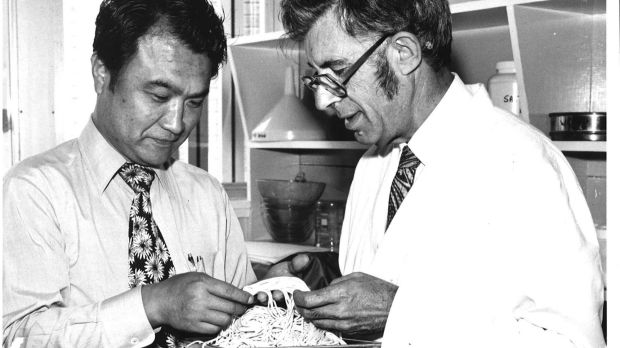
John Moss with Yoshi Shirao, the first Japanese scientist to work on Asian noodles with the Bread Research Institute of Australia, 1981.
They found that women in particular were at risk for metabolic syndrome, whose symptoms include high blood pressure, high blood sugar, excess body fat around the waist, and abnormal cholesterol levels, contributing factors to diabetes, heart attacks and strokes.
In India, Nestlé’s Maggi brand was found to contain seven times the legal amount of lead in their noodles. The government immediately banned them from public consumption. Back in South Korea in 2012, a cancer-causing substance known as Benzopyrene was found in six different brands of noodles produced by Nongshim, South Korea’s largest instant noodle company.
The inventor of instant noodles was the Taiwanese-Japanese businessman Momofuku Ando. With Japan suffering a post-war food shortage, the government tried to encourage people to eat bread made from wheat flour supplied by America. But the Japanese preferred noodles. Japanese noodle companies were too small to satisfy supply needs, so Ando decided to develop noodle production by himself. The experience convinced him that “Peace will come to the world when the people have enough to eat.”
In 1958, after months perfecting his flash-frying method, Ando marketed the first package of precooked instant noodles in the original flavor, Chicken Ramen. In 1971, by providing a polystyrene container, Ando came up with his most successful product, Cup Noodles. Just add hot water. Instant ramen became a booming business, with 100 billion servings sold every year.
Back to our earlier prudish fast-food health discussion. I should mention that John Moss, Australia’s instant noodle revolutionary, was 90 when he died. And that Momofuko Ando, who ate instant noodles for two meals every day, was 96 when he died in 2007.
Oh, and according to his son, big Jim Delligatti consumed at least one Big Mac per week from 1967 to 2017 – 50 solid years of Big Macs — until his death in January. He was 98.
Robert Drewe’s latest book, The Beach, an Australian Passion, is published by the National Library of Australia and is available here: the-beach-an-australian-passion
His other recent books The Local Wildlife and Swimming to the Moon are on sale here: penguin.com.au
The post Fast food inventors pass through the Golden Gates appeared first on .
]]>